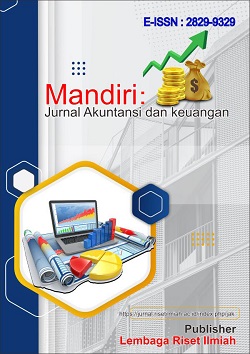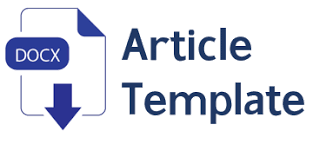Prosedur Pelayanan Dan Manajemen Dinas Kebersihan dan Pertanian Di Kota Medan
DOI:
https://doi.org/10.59086/jak.v2i3.625Keywords:
Kebersihan, Pelayanan, MasyarakatAbstract
This study aims to describe the service procedures and waste management practices of the Sanitation and Landscaping Department of Medan City and to analyze their impact on public satisfaction. Using a descriptive qualitative approach, data were collected through observation, interviews, and documentation. The research focuses on two main aspects: service procedures (waste collection, transportation, scheduling, and response to complaints) and management practices (work planning, human resources, facilities and infrastructure, and supervision). The findings indicate that while the service procedures are structurally in place, they still face challenges such as limited fleets and irregular service schedules. Management efforts have shown improvement through planning and supervision, though overall effectiveness needs enhancement. Public perception of service quality and environmental cleanliness is strongly influenced by the department’s performance. The study’s limitation lies in its incomplete geographic coverage across all districts of Medan City. Periodic evaluations, increased resources and personnel, and stronger communication with the public are recommended to achieve more responsive and participatory sanitation services
References
Customer Service Manager. (2024). How Efficient Waste Management Improves Customer Satisfaction. Retrieved from https://www.customerservicemanager.com
Denhardt, J. V., & Denhardt, R. B. (2000). The new public service: Serving rather than steering. Public Administration Review, 60(6), 549–559. https://doi.org/10.1111/0033-3352.00117
Dinas Kebersihan dan Pertamanan Kota Medan. (2021). Rencana Strategis Dinas Kebersihan dan Pertamanan Kota Medan Tahun 2021–2026. Pemerintah Kota Medan. Retrieved from https://portal.medan.go.id
Environmental Protection Agency (EPA). (1999). Collection Efficiency: Strategies for Success. United States Environmental Protection Agency.
Gagné, M., & Deci, E. L. (2005). Self‐determination theory and work motivation. Journal of Organizational Behavior, 26(4), 331–362. https://doi.org/10.1002/job.322
Guerrero, L. A., Maas, G., & Hogland, W. (2013). Solid waste management challenges for cities in developing countries. Waste Management, 33(1), 220–232. https://doi.org/10.1016/j.wasman.2012.09.008
Hoornweg, D., & Bhada-Tata, P. (2012). What a Waste: A Global Review of Solid Waste Management. World Bank. https://openknowledge.worldbank.org/handle/10986/17388
Narayan, D., Chambers, R., Shah, M. K., & Petesch, P. (2000). Voices of the Poor: Crying Out for Change. World Bank Publications.
Nasution, S. Y., Kadir, A., & Batubara, B. M. (2021). Peranan Dinas Kebersihan dan Pertamanan Kota Medan dalam pengelolaan sampah rumah tangga. Strukturasi: Jurnal Ilmiah Magister Administrasi Publik, 3(2), 156–164.
Osborne, S. P., Radnor, Z., & Nasi, G. (2013). A new theory for public service management? Toward a (public) service-dominant approach. American Review of Public Administration, 43(2), 135–158. https://doi.org/10.1177/0275074012466935
Pakpahan, R. (2020). Strategi meningkatkan minat beli ulang konsumen melalui kepuasan pelanggan. Jurnal Manajemen dan Pemasaran Jasa, 13(1), 83–98. https://doi.org/10.25105/jmpj.v13i1.5565
Parasuraman, A., Zeithaml, V. A., & Berry, L. L. (1988). SERVQUAL: A multiple-item scale for measuring consumer perceptions of service quality. Journal of Retailing, 64(1), 12–40.
Pires, A., Martinho, G., & Chang, N.-B. (2011). Solid waste management in European countries: A review of systems analysis techniques. Journal of Environmental Management, 92(4), 1033–1050. https://doi.org/10.1016/j.jenvman.2010.11.024
Toruan, A. R., & Krisitian, R. K. P. M. (2022). Kapasitas Dinas Kebersihan dan Pertamanan Pemerintah Kota Medan dalam pengelolaan sampah di Kota Medan. Professional: Jurnal Komunikasi dan Administrasi Publik, 9(2), 247–254.
Waste Management (WM). (2022). Customer Service and Satisfaction. WM Sustainability Report.
Downloads
Published
How to Cite
Issue
Section
License

This work is licensed under a Creative Commons Attribution 4.0 International License.
Mandiri Jurnal Akuntansi dan Keuangan
Publisher Lembaga Riset Ilmiah
© 2025

This work is licensed under a Creative Commons Attribution 4.0 International License.
Most read articles by the same author(s)
- Josua Haripendi Panjaitan, Putri Cornelia Manik, Ricky Rafii Ritonga, Pengaruh Harga, Promosi, dan Kualitas Pelayanan terhadap Minat Beli , Mandiri : Jurnal Akuntansi dan Keuangan: Vol. 2 No. 3 (2023): Oktober 2023
- Edward Daniel Saputra, Noveria Purba, Ricky Rafii Ritonga, Pengaruh Kualitas Produk, Kualitas Pelayanan, dan Harga terhadap Keputusan Konsumen , Mandiri : Jurnal Akuntansi dan Keuangan: Vol. 2 No. 3 (2023): Oktober 2023
- Yovie Ernanda, Ricky Rafii Ritonga, Tanjaya Tanjaya, Pengaruh Disiplin Dan Komunikasi Terhadap Kinerja Karyawan , Mandiri : Jurnal Akuntansi dan Keuangan: Vol. 2 No. 2 (2023): Juni 2023












